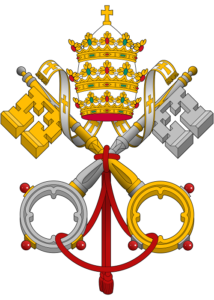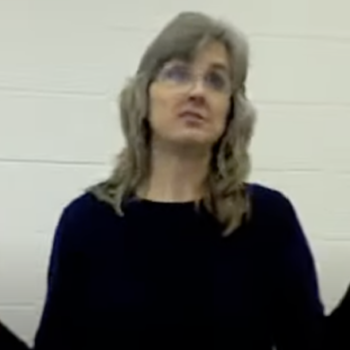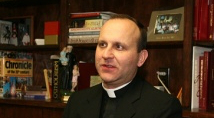The Order of Celebrating Matrimony
- Posted by Mary's Advocates
- On December 16, 2016
- 0 Comments
- Constitution, Vatican
Post Navigation Path: / Research / U.S. Constitution / Sources Cited
Post Navigation Path: / Research / Catholic Divorce / Sources Cited
English Translation
Revised at the Direction of Pope John Paul II
Approved by the United States Conference of Catholic Bishops and Confirmed by the Apostolic See
2016
The Order of Celebrating Matrimony
Published by Liturgical Press, Collegeville, Minnesota.
ISBN 978-0-8146-4641-0
NOTE: Prior to 2016, the Rite of Marriage was in effect for the United States.
Decree by Mandate of the Supreme Pontif John Paul II, 1990
CONGREGATION FOR DIVINE WORSHIP AND THE DISCIPLINE OF THE SACRAMENTS
Prot. n. CD 1068/89
DECREE
The rite of celebrating Matrimony formerly found in the Rituale Romanum was reformed
in accord with the decree of the Second Vatican Council by the promulgation
in 1969 by the Sacred Congregation of Rites of the Ordo celebrandi Matrimonium.
In this second typical edition the same Ordo is presented with an enrichment of the
Introduction, rites and prayers, and with certain changes introduced in keeping with
the norm of the Code of Canon Law promulgated in 1983.
By special mandate of the Supreme Pontiff John Paul II, the Congregation for Divine
Worship and the Discipline of the Sacraments publishes this new edition of the same
Ordo. The Ordo in its second typical edition, composed in Latin, will come into force
immediately upon publication; in vernacular languages, however, when translations
have been confirmed by the Apostolic See, on the date decreed by Conferences of
Bishops.
All things to the contrary notwithstanding.
From the offices of the Congregation for Divine Worship and the Discipline of the
Sacraments, March 19, 1990, the Solemnity of Saint Joseph.
Eduardo Cardinal Martinez
Prefect
W Lajos Kada
Titular Archbishop of Tibica
Secretary
Excerpts from The Order of Celebrating Matrimony
The Questions before the Consent
60. The Priest then questions them about their freedom of choice, fidelity to
each other, and the acceptance and upbringing of children, and each responds
separately.
N. and N., have you come here to enter into Marriage
without coercion,
freely and wholeheartedly?
The bridegroom and bride each say:
I have.
The Priest continues:
Are you prepared, as you follow the path of Marriage,
to love and honor each other
for as long as you both shall live?
The bridegroom and bride each say:
I am.
The following question may be omitted, if circumstances suggest this, for example,
if the couple are advanced in years.
Are you prepared to accept children lovingly from God
and to bring them up
according to the law of Christ and his Church?
The bridegroom and bride each say:
I am.
The Consent
61. The Priest invites them to declare their consent:
Since it is your intention to enter the covenant
of Holy Matrimony,
join your right hands and declare your consent
before God and his Church.
They join their right hands.
62. The bridegroom says:
I, N., take you, N., to be my wife.
I promise to be faithful to you,
in good times and in bad,
in sickness and in health,
to love you and to honor you
all the days of my life.
The bride says:
I, N., take you, N., to be my husband.
I promise to be faithful to you,
in good times and in bad,
in sickness and in health,
to love you and to honor you
all the days of my life.
The following alternative form may be used:
The bridegroom says:
I, N., take you, N., for my lawful wife,
to have and to hold, from this day forward,
for better, for worse,
for richer, for poorer,
in sickness and in health,
to love and to cherish
until death do us part.
The bride says:
I, N., take you, N., for my lawful husband,
to have and to hold, from this day forward,
for better, for worse,
for richer, for poorer,
in sickness and in health,
to love and to cherish
until death do us part.
63. If, however, it seems preferable for pastoral reasons, the Priest may obtain the
consent of the contracting parties through questioning.
First, he asks the bridegroom:
N., do you take N., to be your wife?
Do you promise to be faithful to her
in good times and in bad,
in sickness and in health,
to love her and to honor her
all the days of your life?
The bridegroom replies:
I do.
Next, the Priest asks the bride:
N., do you take N., to be your husband?
Do you promise to be faithful to him
in good times and in bad,
in sickness and in health,
to love him and to honor him
all the days of your life?
The bride replies:
I do.
The following alternative form may be used:
First, he asks the bridegroom:
N., do you take N. for your lawful wife,
to have and to hold, from this day forward,
for better, for worse,
for richer, for poorer,
in sickness and in health,
to love and to cherish
until death do you part?
The bridegroom replies:
I do.
Next, the Priest asks the bride:
N., do you take N. for your lawful husband,
to have and to hold, from this day forward,
for better, for worse,
for richer, for poorer,
in sickness and in health,
to love and to cherish
until death do you part?
The bride replies:
I do.
The Reception of the Consent
64. Then, receiving their consent, the Priest says to the bride and bridegroom:
May the Lord in his kindness strengthen the consent
you have declared before the Church,
and graciously bring to fulfillment his blessing
within you.
What God joins together, let no one put asunder.
Or:
May the God of Abraham, the God of Isaac,
the God of Jacob,
the God who joined together our first parents
in paradise,
strengthen and bless in Christ
the consent you have declared before the Church,
so that what God joins together, no one may put asunder.
65. The Priest invites those present to praise God:
Let us bless the Lord.
All reply:
Thanks be to God.
Another acclamation may be sung or said.
The Blessing and Giving of Rings
66. The Priest says:
May the Lord bless W these rings,
which you will give to each other
as a sign of love and fidelity.
R. Amen.
Other formulas for blessing the rings, nos. 194–195.
He sprinkles the rings, as the circumstances so suggest, and gives them to the bride
and bridegroom.
67A. The husband places his wife’s ring on her ring finger, saying, as the circumstances
so suggest:
N., receive this ring
as a sign of my love and fidelity.
In the name of the Father, and of the Son,
and of the Holy Spirit.
Likewise, the wife places her husband’s ring on his ring finger, saying, as the
circumstances so suggest:
N., receive this ring
as a sign of my love and fidelity.
In the name of the Father, and of the Son,
and of the Holy Spirit.





0 Comments